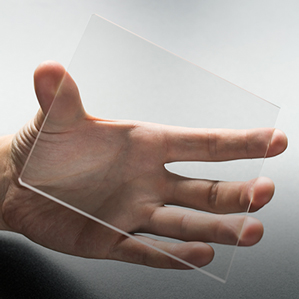Sapphire Screens Would Test Apple’s Manufacturing and Design Skills
Today Apple senior vice president for design, Jony Ive, called out the remarkable properties of sapphire, a material that’s so hard you’d basically need a diamond to cut it. It protects the back and front of Apple’s new watch.

Cracked screens are a common problem for smartphone users, so virtually unscratchable, unbreakable screens could make for a compelling marketing campaign. But just how durable sapphire will be is debatable. Much will depend on how well Apple can manufacture it in large quantities, and how it incorporates the material into its devices.
Rumors have been circulating for months that Apple plans to use sapphire, a substance that is significantly harder than glass, in its latest iPhones, and perhaps its first iWatch. The company’s decision to invest about $700 million in an industrial sapphire plant in Arizona starting last year added considerable weight to the theory.
Sapphire is already used in small amounts to make scratch-resistant screens for luxury watches, and Apple uses small pieces of sapphire to protect the camera and the home button on the iPhone 5S. But sapphire’s high cost has limited its applications; although new ways of growing sapphire crystals have made it cheaper to produce in recent years, it’s still roughly five times more expensive than toughened glass.
While sapphire can be much stronger than the toughened glass now used for most smartphone screens (it is second only to diamond on a standard scale of hardness), if it isn’t processed correctly, it can actually be more prone to breaking.
Indeed, one test a sapphire display removed from a Kyocera Brigadier shows it cracking after a drop of just three feet (the sapphire didn’t crack when it was still incorporated into the device). And Corning, the company that makes the Gorilla Glass, which is widely used in smartphones, has produced a video of sapphire cracking after being scuffed up by a few everyday objects.
But Corning is hardly an unbiased observer, and these tests say little about how Apple’s devices will perform, because the properties of sapphire depend so heavily on how it is processed and incorporated into devices.
Some types of cutting and polishing can introduce defects into the material that make it easier to break than glass. “Any flaws or scratches dramatically reduce the strength,” says Neil Alford, a material engineering professor at Imperial College of London. The material’s properties also depend on the orientation of the crystal—certain cuts of sapphire are stronger than others.
To prevent a gadget’s screen from cracking, you need to do two things, according to Robert Ritchie, a professor at the University of California, Berkeley, who studies the failure mechanisms of materials. First, you need be careful to avoid defects that might allow scratches, because these can lead to more serious cracks. Second, the overall design needs to absorb the energy of an impact–something the Kyocera phone does. Sapphire itself isn’t great at this—it’s a brittle material, though slightly more fracture-resistant than glass, Ritchie says. So you need to be clever about how you package it in a phone or a watch, so that the other materials in the device can absorb the energy of an impact.
This story was updated at 4:30 p.m. EST on September 9 with details of Apple’s announcement.
Keep Reading
Most Popular
Large language models can do jaw-dropping things. But nobody knows exactly why.
And that's a problem. Figuring it out is one of the biggest scientific puzzles of our time and a crucial step towards controlling more powerful future models.
The problem with plug-in hybrids? Their drivers.
Plug-in hybrids are often sold as a transition to EVs, but new data from Europe shows we’re still underestimating the emissions they produce.
Google DeepMind’s new generative model makes Super Mario–like games from scratch
Genie learns how to control games by watching hours and hours of video. It could help train next-gen robots too.
How scientists traced a mysterious covid case back to six toilets
When wastewater surveillance turns into a hunt for a single infected individual, the ethics get tricky.
Stay connected
Get the latest updates from
MIT Technology Review
Discover special offers, top stories, upcoming events, and more.